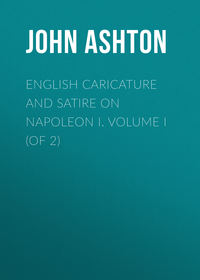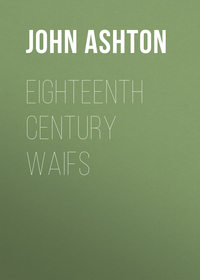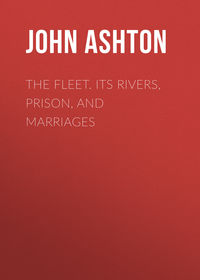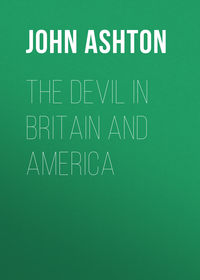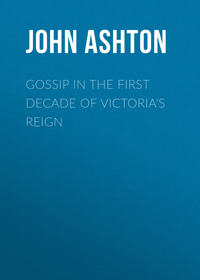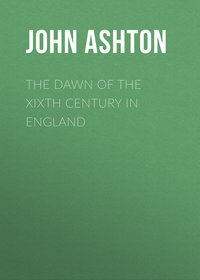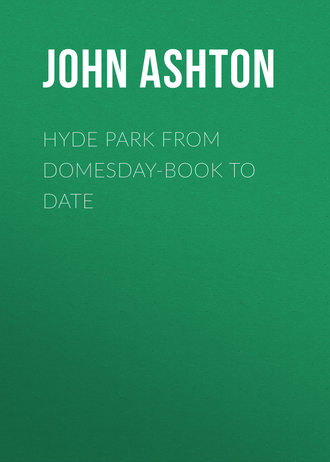
Hyde Park from Domesday-book to Date
The meeting duly took place, and passed away without event. The League was on its last legs. As The Times observed, – “Yesterday, however, the League put forth its strength for a final effort, but sad to say, it failed egregiously. It made a grand effort of despair, but it lacked the strengthening impulse which that feeling ordinarily instils. A dull, lethargic passiveness pervaded every movement of the demonstration.”
CHAPTER XIX
Demonstrations against the Irish Church, 1868 – In favour of Fenians, 1869 – Regulations made by Commissioners of Works – Fenian Demonstration, 1872 – A speaker sentenced – Meeting about the Eastern Question, 1878 – Fight – Preaching in the Park – Modern instances – May-Day and May 6, 1894 – Against the House of Lords, Aug. 26, 1894.
On Sunday, July 19, 1868, there was a demonstration in the Park against the Irish Church: then there was one in favour of the Fenians in Oct., 1869. But it is not worth chronicling all the meetings that have taken place since the time when the Commissioners of Works settled upon the place of public meetings, and the routine necessary before they were held.
Times, Oct. 15, 1872: “The Commissioners of Works have caused to be erected in Hyde Park, at exactly 150 yards distance from the so-called ‘Reformers’ Tree,’52 a granite pedestal and iron standard, surmounted by a board, to mark the spot where it shall be lawful (and there only) to hold public meetings, and inscribed with the following announcement: ‘The Notice Board respecting Public Addresses. – No public address may be delivered except within 40 yards of the notice board on which this rule is inscribed.’ The rule is to the following effect, and in addition, posted at all the entrances to the Park: ‘No public address may be delivered unless a written notice of the intention to deliver the same, signed with the names and addresses of two householders residing in the metropolis, be left at the offices of Her Majesty’s Works and Public Buildings, at least two clear days before: such notice must state the day and hour of intended delivery. After such notice has been received, no other notice for the delivery of an address on the same day will be valid.’ ”
Because the concession had been made, of course it was forthwith to be set at nought – by a Fenian Demonstration. The following is the commencement of an account of the meeting in The Standard of Nov. 4, 1872.
“The late Mr. O’Connell was in the habit of boasting that he could drive a coach-and-four through an Act of Parliament. The sympathizers with political discontent, or disturbance rather, in London, transcended the rhetorical flourish of the agitator, par excellence, yesterday. They had been bragging at Convention for some time past that they would hold a meeting in Hyde Park, ‘the people’s Park,’ in the teeth of Mr. Ayrton and the Parks Regulation Bill,53 and yesterday they carried out their threat. The day was the day consecrated to God’s worship, but these disciples of ‘the revolution’ held their demonstration all the same, evidently acting on the principle of the proverb ‘the better the day, the better the deed.’ The object of the gathering was to seek for the amnesty of the political prisoners (by political prisoners being understood sundry soldiers who had forsworn their allegiance to join a conspiracy against the Queen’s Government, and the lives of their own comrades), and various other culprits who, under the pretence of patriotism, had transgressed the laws that regulate the order of the community by acts of violence.”
This led to twelve of the speakers being summoned to Marlborough Street Police Court, and one of them, a man named Bailey, was tried before the magistrate as a test of the whole, on Nov. 19, and fined 5l. or a month’s imprisonment, but it was agreed that a case should be stated, and taken to a higher Court, the other summonses being adjourned sine die. The Appeal came on at the Queen’s Bench, on Jan. 23, 1873, before three judges, who all concurred in affirming the conviction. The Treasury, to the very great disgust of the Fenian sympathizers, presented them with a bill of costs for 100l., but I do not know whether it was ever paid.
The effect of licensing public meetings in Hyde Park has been to turn that place into a bear-garden on most Sundays during fine weather, and one-sided meetings, more or less orderly, have been held on almost every subject, social and political. Is there a strike, the strikers must needs go and bellow their grievances – be they cabmen, laundresses, bakers, or unemployed. What good they think can accrue from it, they themselves cannot answer. As to the Trades’ Unions who go there periodically, I fancy very few would go were it not to show their regalia, air their banners, and march to the sound of a brass band; while of late years it has become to very many a Sunday picnic, to which they and their wives go in brakes. Nay, sometimes they meddle with things wholly out of their sphere; as, for instance, the demonstration on the Eastern Question on Feb. 24, 1878, at which the following handbill was distributed: —
“Russian Meeting in Hyde Park: – Englishmen! A last attempt is to be made by the baffled agents of Russia, on Sunday, Feb. 24 (to-day), to corrupt and undermine the patriotism of our countrymen. Do you wish Count Schouvaloff to telegraph to the Czar that any meeting of Englishmen have passed resolutions in favour of the policy of the most despotic and cruel Power in Europe, a Power that deliberately crushes all ‘national freedom’ with the iron heel of military force, and shuts out British industry from all her territories? Any resolution passed at their meeting will be a direct encouragement to Russia. Nothing but a vigorous and determined policy will prevent war, which the Russian party, if successful, will inevitably bring about, as they brought about the Crimean War, in 1853.”
While Mr. Auberon Herbert was speaking, The Times says that “A rush was made by a number of well-dressed young men on the south-east, at the same time that a huge column, with banners spread, was advancing from the north-east. It was easy to see that the ‘specials’ in the ring had had no military training, for some left the part which needed the most strength to repel the attack made by the young men. The chairman and the clergyman disappeared, and the Peace party then stood ready to greet the on-coming column. Mr. Bradlaugh had a special constable’s staff in his hand; and, parleying with the head of the column, demanded that their flags should be put down. Each of the men who had composed the circle brought out a constable’s staff. The platform was, meanwhile, left in the possession of one person. The Peace party tore down the Turkish and Polish banners from the poles, and thereupon the anti-Russian party made a rush to, and broke up the platform.
“The mélée now became almost general, for all classes of persons had got mixed up together, and in the struggle of those who wanted to pass out of harm’s way, an extraordinary scene was presented. There must have been 60,000 or 70,000 people, but only a very small number was inclined to take active part in the proceedings. The fight, which was more noisy than hurtful, did not occupy much time. One or two men climbed small trees, where they took up the remains of the Turkish flag, and displayed it upon the leafless branches. It was draped too low, however, and was seized and lost. One of the events of the day was a regular fight in a tree, between two well-matched antagonists. The fight was witnessed by the whole crowd, some of whom took it upon themselves to dislodge the fellows from the trees, by pelting them with heavy sticks and stones.”
But public meetings were not the only nuisance occasioned by throwing open the Park. It at once became a place for every shade of religious and secular doctrine to be preached; and the first notice I can find of these practices is in a letter in The Times of Nov. 27, 1872.
“The public are not aware of what occurs on Sundays in Hyde Park. Here is what I have seen.
“A man dressed as a clergyman was standing on a seat near the Serpentine, and preaching to a few listeners, a very sensible sermon. A policeman advanced and told him, ‘This is not allowed.’ The preacher at once discontinued. Scene the second. A considerable crowd near what is called the Reformers’ Tree: three men, dressed in cassocks and caps, preaching such terrible blasphemy that I quite shuddered to hear it, our Saviour’s name and His words being travestied in the most awful and obscene manner. The policeman there stood outside the crowd, but made no attempt to interfere.”
Are things better now? Let anyone go and see for himself; or, if that is inconvenient or impossible, let him read these two recent newspaper cuttings (Globe, April 16, 1894): —
“Disorderly Scene in Hyde Park“Yesterday afternoon a disorderly scene took place in Hyde Park. Two persons who were endeavouring to hold a religious meeting near the Serpentine, were surrounded by a crowd of men and boys, and, owing to some peculiarity, were frequently interrupted and prevented from proceeding with the service they were attempting to conduct. Finally, the opposition became so demonstrative that the two men were compelled to beat a retreat, a small banner they had with them being torn. Their hats were knocked off, and they were otherwise subjected to considerable hustling and ill-usage. Some disorder also occurred at a meeting which was being held close by. Scenes of this character have recently become very common in the Park.”
“The Bishop of Hyde Park“At the Marlborough Street Police Court, John Mullane, thirty-seven, labourer, Circus Street, Marylebone; John Hayes, twenty-three, painter, John Street, Marylebone; and John Henlay, thirty, labourer, Carlisle Street, Marylebone; were charged with fighting together in Hyde Park. A police sergeant said that on Sunday evening, a man named Scully was addressing a meeting in Hyde Park, close to the Marble Arch. Presently, the three prisoners began to fight with each other, apparently over some argument with Scully. To prevent further disturbance, he obtained assistance, and took the men into custody.
“In defence, Mullane said he was listening to Scully, and noticed that he had a bottle in his pocket. Scully said it was water, but Hayes smelt it, and said it was gin. Then Scully knocked him (Hayes) down. He (Mullane) then struck Scully, when Henlay came up and struck him (Mullane) and knocked him down. Henlay said that he was standing behind Scully, when Hayes took the bottle out of his (Scully’s) pocket, struck Scully, and threw him on the top of him (Henlay). Peter Scully deposed that he lived in Stanhope Street, Deptford, and got a living by selling ‘good’ books. He had been in the habit of lecturing in Hyde Park, in favour of religion, for the last twelve years. While he was speaking on Sunday night, a bottle of water was pulled away from him, his hand was cut, and his chair was pulled from under him. People called him the ‘Bishop’ of Hyde Park, because he had such large audiences. He saw two young fellows struck.
“Mr. Newton: ‘You see all these disturbances are caused by your preaching.’ – Scully: ‘I cannot help that.’ – Mr. Newton: ‘Yes, you can, because you need not preach there.’ – Scully: ‘Many other persons speak there as well as myself, and if I should stop speaking there, the other speakers should do the same.’ – Mr. Newton: ‘I think it would be a good thing if all of them were stopped. If there were no speakers in the Park, there would be no fights.’ – Scully: ‘I should not mind if speaking in the Park were stopped, for I can always get an audience, and could address meetings elsewhere.’ – Mr. Newton (addressing the defendants) said, they ‘should not misbehave themselves in the Park,’ and ordered them to enter into their own recognizances to be of good behaviour in the future.” —Daily Graphic, May 1st, 1894.
Here, also, in the Park, men’s minds are poisoned by the doctrines of Socialist and Anarchist; but the latter, at present, is somewhat out of favour with King [Greek: dêmos] – probably on account of the Anarchist predilection for bombs, against which even his majesty is not proof. Here is an account from the Daily Graphic of last
“May Day in Hyde Park“The May Day celebration in London has been marked by one of the most extraordinary scenes ever witnessed in Hyde Park. The occasion was a demonstration organized by the Social Democratic Federation to unite with the demonstrations on the Continent in making the first of May Labour Day. There was, of course, a procession, which formed up on the Embankment, and was about as imposing as that which follows a drunken man to the police-station.
“There was the difference that it had a few waggonettes and greengrocers’ carts to lengthen it out. Some of the waggonettes and the greengrocers’ carts were arched in with green branches, and the drivers wore red caps of the sort usually associated with burlesque. They were understood to represent ‘caps of liberty.’ A few bakers’ carts displayed specimens of French loaves and horseshoe rolls. In some of the carts were children who sang the ‘Marseillaise,’ as the carts trailed through Piccadilly. Girls of an older growth had donned white dresses trimmed with a virulent red, and marshalled the younger ones. Mr. Keir Hardie, with his tweed cap and his pipe, walked through the crowd like one who expected the homage due to a hero. Mr. William Morris was also there, but one could not help thinking that he was, and felt, out of place. There were speeches, of course. These were laudatory, for the most part, of the workers and the Social Democratic Federation.
“But the Anarchists had, somehow, recovered their spirits, and had ventured to join in the procession. Agnes Henry, in her inevitable yellow ulster and cloth shoes, plodded indefatigably on the outskirts of the crowd. Louise Michel hovered here and there. They had their flags – red with black fringes – with them. One was an imposing banner on two poles, with an appeal to put down all government and authority. The Anarchists took up their position as side shows to the main demonstration. The crowd had paid no attention to the Social Democrats, but the Anarchists drew them like a magnet. A man, named Leggatt, a well known anarchist, declaimed from one platform; a succession of speakers, including Louise Michel, Mowbray, Dr Macdonald, and others, from another, which was intended to be more important. Sullivan, of Tower Hill fame, had a little show of his own. There was an evident desire to listen to the Anarchists patiently at first. Then the listeners had their feelings jarred by some outrageous exposition of the doctrine of explosives. They groaned and hooted. Leggatt, with clumsy retort, said they should be at a Board School, or playing marbles. So far as he was concerned, the result was disastrous. There was a spring at him, and he swayed for a moment on his perch, and then came down full length, while his platform was soon in little bits. The police, who had been observing the ugly temper of the crowd, rushed in, just in time to save him from worse injury. The banner was promptly in ribbons, and its pole was broken up. On this the people at the other platform discreetly folded their banner, and took it away.
“They would have done as well to have taken themselves away also. One man, whose vanity shall not be gratified by having his name mentioned here, said the police were keeping down the workers. ‘You will never be free while you have such men as Melville.’54 He was answered with a cheer for the police, and, in a second more, was in the hands of the crowd. There were cries of ‘In the Serp. with him,’ and again Chief-Inspector Peters and his men had to rush in to save the demonstrators from the consequences of their own folly. A red tie became a dangerous article of adornment – there were threats to lynch the wearers. It was now becoming more and more difficult to keep the crowd in hand. Big as the A.R. division men are, they could hardly force their way through the dense masses.
“Never has there been such a scene in the Park. Racing across it came the hunted Anarchists, surrounded by a yelling, fist-using crowd, with the police protecting, as well as they could, the objects of the public wrath. At the Marble Arch, the police formed a cordon across the gates and closed all passage, and it was then only that the Anarchists, bleeding and bruised, were able to get into cabs and be driven to safety.”
Any one would have thought that this lesson would have lasted them some time, but it was not so. On the first Sunday in the month (6th May) the annual demonstration in favour of a “Legal Eight Hours Day” took place in Hyde Park; and, although the Anarchists had nothing whatever to do with the meeting, yet the irrepressibles were there, and succeeded in marching to their usual speaking-place near the Reformers’ Tree; but their reception by the sympathizers with the demonstration was of so hostile a character, that before the head of the procession arrived, they were hunted out of the Park, and, but for the protection afforded by the police, several would have been severely handled.
Perhaps the greatest fiasco of any of these meetings was one held Aug. 26th, 1894, with a view of abolishing the House of Lords. There were comparatively few people, the procession being made up of banners and bands.
CHAPTER XX
The Children’s Fête in Hyde Park, 1887As a refreshing set-off to the mouthings of mobs in Hyde Park, let us turn to the prettiest and pleasantest sight that the Park ever beheld, namely, the Children’s Fête in Hyde Park, on June 22, 1887, in commemoration of the Queen’s Jubilee, the following account of which is taken from The Times of June 23: —
“Hyde Park yesterday was the scene both of festivity and ceremonial, the children being the happy mortals who were especially privileged to take part in the former, and witness the latter. It was a kind thought that prompted the organization of a monster treat for the boys and girls of the poorer classes in this season of general jubilation, and equally kind was the interest at once taken in the matter by the heads of our Royal house. It would be hard to conceive any form of enjoyment more calculated to impress upon youthful minds the exceptional circumstances of the present week, than yesterday’s fête. Even if it had not been graced with the presence of her Majesty, and of the members of her family, the occasion would, probably, never have slipped from the memory of any child who shared in the day’s amusements; but, as the little ones were not only entertained on a scale which must have surprised the most imaginative of them, but were actually honoured by a special visit from the Sovereign herself, it is, indeed, likely to remain for ever indelibly fixed on their minds. To Mr. E. Lawson,55 who originated the idea which was realized yesterday, the children owe a debt of gratitude. Thanks are also due from them to the many donors who supplied the funds required to defray the costs of the fête. First among these were the proprietors of The Daily Telegraph, who headed the list of subscriptions with a very large sum,56 and undertook the collection of subscriptions, and the general management of the festival. To the Committee of Organization also the gratitude of the children ought to extend. The task of arranging for their safety, and providing for their wants, involved no slight amount of forethought and care, and was fulfilled with a conscientiousness which deserved and commanded success.
“The portion of the Park which was the scene of the festivity was that which is seldom visited by any large concourse of civilians, except for the purpose of expressing dissatisfaction with the laws, or the system of government. On this occasion, however, the Reformers’ Tree was forgotten, and nothing but expressions of satisfaction were heard. The playground of the children extended from the drive, on the north of the Serpentine, to the north of the Park: it was bounded on the east by the trees which shadow the roadway leading to the Marble Arch, and its breadth westward was about a quarter of a mile. On this level expanse, about 26,000 children disported themselves from noon till dewy eve. All were in the highest spirits, and all behaved as well as the best friends could wish. The amusements provided were multifarious and varied, and supplemented by impromptu additions, such as racing and dancing, which gave scope for physical exercise. The day was lovely, and not oppressively hot. With such conditions, what wonder that the children enjoyed themselves!
“The duty of selecting them – for, of course, they were but representative of their class – had been performed under the supervision of Mr. J. Diggle, chairman of the London School Board. The selection had been made among the Board Schools and Voluntary Schools of the metropolis, and that it had been made with care was evident. The children were all spruce and clean, and in many cases attired with unostentatious taste. The dresses of many of the girls were simple white, the sashes which bound them being blue or yellow. The prognostications of ill fortune, which had come from some quarters, were wholly unfulfilled, no greater mishap occurring to any child than a temporary indisposition brought on by heat and excitement. More than one case of this kind occurred, but the possibility that medical aid might be required in the course of the day had been provided for, and the little patients were not left long unsoothed and unrelieved. That any child, however young, should be lost, with so many friends at hand ready to aid, was scarcely within the bounds of probability, but in case of emergency a special tent had been erected for the reception of stragglers who might be unable to give any lucid description of the direction in which they wished to go. The difficulties which straying children might otherwise have caused were also obviated by the simple expedient of requiring each boy and girl to wear a ticket bearing the name of the holder, and the number of the tent allotted to his or her school. The watchful interest extended to their charges by the teachers who accompanied the small folk, was almost in itself sufficient to reassure the most nervous of mothers.
“The playground was surrounded with Venetian masts, erected at short distances from one another. Near the Achilles statue there were clusters of these masts. A gilt crown shone at the top of each, and between them hung a banner of plush velvet, exhibiting, in gold letters, the following fervent wish for the Queen’s welfare: —
‘God bless our Queen – not Queen alone,But Mother, Queen, and Friend in one.’“Though the children were not expected till nearly 1 o’clock, several members of the Committee were on the ground long before this, completing the necessary arrangements. Little, however, remained to be done; and when the guests of the day did arrive, everything was in perfect readiness. About 9 o’clock the police, whom, to the number of over 3000, Sir Charles Warren57 had detailed for different duties in connection with the fête, commenced operations by clearing the enclosed ground of all unauthorized persons. During the day admission was strictly confined to those armed with invitation tickets, the issue of which had been by no means lavish, so that adults present bore but a very small proportion to the juveniles. The general public, numbering many thousands, took up positions upon the outskirts of the reserved space, which was, at points of the greatest pressure, fenced in with iron hurdles, to prevent the encroachments of the crowd. Among those who, in this somewhat disadvantageous position, patiently waited several hours were very many of the children’s parents, and these can have obtained only a passing glimpse of the Queen, and but a distant view of the doings with the privileged circle.
“About 11 o’clock, a squadron of the 2nd Life Guards, and 200 men of the Foot Guards, arrived to assist in keeping the ground, and, later in the day, these were reinforced by two more troops of the 2nd Life Guards, to keep the roadway clear for the Queen. The presence of the military added greatly to the brightness of the scene. Soon after 1 o’clock all the children had safely passed into the Park, and reached their allotted playground. About 13,000, belonging to schools on the south side of London, assembled in St. James’s Park at 12 o’clock; and, having been marshalled by some 30 sergeants from Wellington Barracks, marched off, four abreast, headed by Mr. Bennet Burleigh, and Mr. J. T. Helby, of the London School Board. Proceeding past Buckingham Palace and up Constitution Hill, they entered Hyde Park by the Grosvenor Gate, and reached their destination, without mishap, and in capital order. A column almost as large, consisting of children from the northern districts of London, assembled in Regent’s Park soon after 11 o’clock, and were put in position by Mr. Howard Vincent, M.P., Mr. H. Lawson, M.P., Capt. E. Brodie, and Mr. W. Sheffield (drill instructor to the London School Board). This column also reached the Park in good time, and in good order. Smaller contingents that had assembled, the one in Battersea Park and the other in Kensington Gardens, also arrived.


